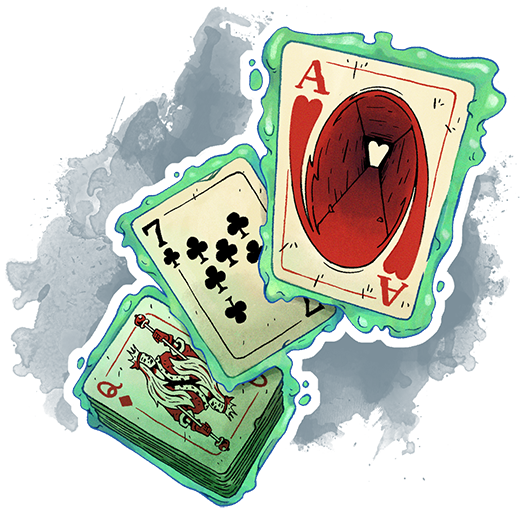
This stoppered flask has a faint, nearly indistinguishable sound when shaken. The decanter weighs 2 pounds. This item has 6 charges and regains all expended charges each day at dawn.
You can use an action to remove the stopper and speak one of three Command words, whereupon sand pours out of the flask and a number of charges are expended. The sand stops pouring out at the start of your next turn. Choose from the following options:
- “Pile” expends one charge to create a small pile of sand that can cover a 1-foot-square.
- “Dune” expends three charges to create a pile of sand that is 10 feet across and is about 5 feet tall. This sand is expelled with some force, and moves Large or smaller creatures that would be covered by the sand to the edge of the pile.
- “Desert” expends 6 charges to create a veritable sea of sand that erupts from the decanter as a 30 foot geyser. This sand covers a a 20-foot circle and is up to 10 feet deep at it’s center. Any creature in the radius of the sand is pushed towards the edge of the area until it would no longer be covered by sand, unless it has a burrow speed.

This crown is the same hue as solid gold, though slightly translucent and doesnt weigh as much as you might expect it to. It is encrusted in yellow gemstones and glistens with every movement. It has 10 charges and regains 1d6 + 4 charges each day at dawn. If you expend the last charge, roll a d20. On a 1, a swarm of bees appears, and consumes and destroys the crown before dispersing.
While wearing the crown, as an action you can expend a number of charges to create one of the following effects.
1 charge, you cause a swarm of harmless flying insects to spread out in a 15-foot radius around you. The insects remain for 10 minutes, until you disperse it, or a wind of at least 10 miles an hour disperses it. This area is heavily obscured for all creatures besides you.
4 charges, you cast
5 charges, you cast

This deep red coin pouch is stitched in gold thread and sinched with a black braided serpent carrying an onyx in it’s mouth.
When attuned with this item you can reach into it to pull out a number of copper, silver, or gold pieces that fit in your hand. You can pull out coins worth up 20 gold per day. If you attempt to pull out more than this in a day you must make a Constitution check DC 15. On a failure you reach in and pull your hand out empty handed, taking 1 Necrotic damage per coin you tried to grab.
Time Is Money
If you concentrate on the serpent’s onyx with the name of a destination in mind you, and up to eight willing creatures that are touching you, teleport to within eyesight of the destination that the name best describes as if using the spell
A Fool And His Gold
As a bonus action you can make any metal within a 5-foot cube in sight range appear as if it is actually gold. This does not change the properties of the metal in any way, and if a creature uses its action to examine it they can determine it is not gold with a succesful Intelligence (Investigation) check DC 18. This effect lasts as long as you are touching or able to see the metal.
Curse. After taking out 500 gold, or sleeping while touching this purse, the next night as you rest a Shadow Demon taking the form of a giant snake materializes 120 feet above you with the goal of swallowing the purse. If it succeeds it vanishes and after completing your next long rest you are cursed. If it fails, you get a vision of the current location of Minauros. This repeats each time the conditions are met until the demon succeeds.
When cursed a red and black snake tattoo manifests around your wrist, trailing down your arm. You are no longer considered attuned to the purse but can still use it’s abilities with a snap of your fingers so long as the tattoo remains. This tattoo lets Minauros know your location at all times. Additionally, when you use Time Is Money you now descend from a black maw in the sky, pouring down in a dark ichor that slowly seeps into the ground.

This large barrel is full of a sticky substance that is intensely black and viscous. If the barrel breaks or you tip it over it the substance oozes forth. It takes 1 minute to cover a 5 foot square and can cover up to 20 squares.
Any creature that enters or ends their turn on a square covered in Impossible Tar must make a DC 12 Strength saving throw or be Restrained. A creature restrained in this way can use its action to make a DC 15 Strength check and on a success it frees itself. If a creature becomes Prone while Restrained by Impossible Tar it can no longer free itself and must be assisted by another creature.
The tar lasts for one week outside the barrel, until it is frozen, or until exposed to universal solvent. It is too sticky to put back in the barrel.


This deck of sturdy playing cards have a beautiful abstract design and when inspecting them you can see an endless void through their suits. While counting or shuffling this deck it is easy to lose track of where you are. As an action you may draw a card and activate it by placing it against a vertical surface at least 5-foot square within reach. When activated a card opens up an interdimensional hallway. You can choose how for this hallway goes; For instance “until the other side of this wall”, or “250 feet”, however the maximum distance traveled is the value of the drawn card times 50 feet. Numbered cards’ values are equal to their number, while face and ace card values are 10 and 15 respectively. After a card is activated its suits fade. A faded card has a value of 2 when activated again, regardless of its actual number or type. Once all cards in the deck have been activated this item becomes a mundane deck of playing cards.
Interdimensional Hallways
Interdimensional hallways created by this deck are always one tenth the length on the inside as they are on the outside, so a 100 foot hallway would only take 10 feet to travel through. These hallways are not visible or tangible in any way from outside them except for the one-way doors at each end and last for one hour or until one of the doors is destroyed. If a door is destroyed before it collapses creatures in the hallway must make a DC 12 Dexterity Saving throw. On a failure they take 2d10 bludgeoning damage and are expelled out of the hallway from the closest door; However, on a critical failure the creature is transported to another plane or demiplane of the DM’s choice instead. On a success they take half as much damage and can choose which door they are expelled from.

This unique bracelet is made from snake vertebrae and features silver and topaz charms. When within 15 feet of a snake the vertebrae vibrate subtly, creating a quiet rattle.
As an action you can choose to transform into a snake. You can choose to appear as any species of snake and for your size to either be Tiny or Huge. Your hit points, physical, and mental ability scores are not replaced; However you are limited in the actions you can perform. You cant speak, cast spells, or take any other action that requires hands or speech. Additionally, your gear melds into the snake form and you can not activate, use, wield, or otherwise benefit from your equipment. As an action, or if you become incapacitated, you revert to your original form.
If you are a Tiny snake you gain a swimming speed equal to your walking speed and a climbing speed of 20 feet. If you are a Huge snake you gain advantage on Intimidation checks and Strength checks. As either size you gain Blindsight out to 10 feet.

This glistening blue-gray scale mail is made from overlapping plates of a glossy material you can’t identify, but it is certainly not metallic. While wearing this armor you have a burrow speed of 20 feet through sand or loose earth, and can still breathe even while completely encased in dirt, sand, or other similar materials.

The shaft of this staff is made from a petrified branch, worked to almost a mirror finish. It is topped with a large chunk of obsidian that comes to a twisted point. This staff has 5 charges and regains 1d4+1 expended charges each day at dawn. While attuned to this staff you can tell how long ago volcanic rock was formed, and what type it is.
As an action you can expend a charge from this staff and aim it at a point on the ground or a wall within 60 feet. When you do so the obsidian glows white-hot and a pinpoint ray of immense heat fires from the staff. Each creature within 5 feet of the ray, or 15 feet of the target point, must make a DC 16 Dexterity saving throw. A creature takes 4d6 fire damage and 4d6 radiant damage on a failed save, or half as much damage on a successful one. If an area affected by this ray is composed of sand or stone it too becomes white-hot before turning to a black glass over the course of a minute, and any creature that starts its turn touching the area during that time takes 2d6 fire damage.

This black leather gauntlet has an intricate bronze ridge down it’s back with five carefully cut stone “gems” set in it’s winding pattern. You can focus on these gems and choose an area of terrain no larger than a 40-foot-cube within 120 feet that you can see. You can reshape dirt, sand, or clay in this area in any manner you choose so long as you maintain concentration (as if concentrating on a spell) for at least the duration required to do so: to reshape a 10-foot-cube it takes an action, 1 minute for a 25-foot cube, and 10 minutes for a 40-foot-cube.
You can raise or lower the area’s elevation, create or fill in a trench, erect or flatten a wall, or form a pillar. The extent of any such changes can’t exceed half the area’s largest dimension. So, if you affect a 40-foot cube, you can create a pillar up to 20 feet high, raise or lower the area’s elevation by up to 20 feet, dig a trench up to 20 feet deep, and so on. It takes the entire duration for these changes to complete. Because the terrain’s transformation occurs slowly, creatures in the area can’t usually be trapped or injured by the ground’s movement.
This effect doesn’t directly affect plant growth, natural stone, or structures. The moved earth carries any of these things along with it. If the way you shape the terrain would make a structure unstable, it might collapse. Similarly, if these transformations would make the terrain itself unstable it will collapse when you stop concentrating on it.

This stoppered flask sloshes with a cavernous echo as if its much larger than it appears and always weighs 2 pounds. As an action you can remove the stopper and pour out 1 gallon of fresh water. The water stops pouring out at the start of your next turn. The decanter holds 30 gallons of water in total, and can not be refilled by normal means.

This crystal orb is a matte white with no distinguishing factors whatsoever, and yet it has a mesmerizing quality when you gaze into it. While attuned to this orb you have advantage on saving throws against the spells
As an action you can touch a creature with the orb and force it to make a DC 18 Charisma saving throw. On a success they feel incredibly parched, but are otherwise unaffected. On a failure the target creature is transported to a demiplane of infinite desert. Each minute a creature trapped within the demiplane must make a DC 12 Constitution saving throw. On a failure they gain 1 level of exhaustion. On a success, or when they reach 3 or more levels of exhaustion, they are expelled from the demiplane and reappear in the nearest unoccupied space to where they left. Once used this feature can not be used again until your next long or short rest.




